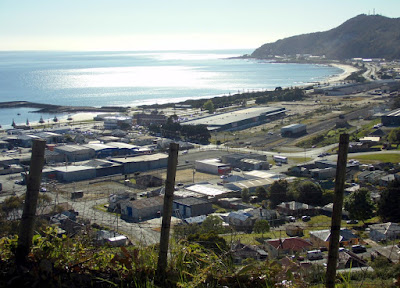Solar power, that is.
My 3 kilowatt system has been proving its worth for nearly three years now. But there's room for another 2 kilowatts worth of panels on the roof.
Thursday was the big day. Up go the panels.
And in go the batteries. 11.4 kilowatt hours worth. Batteries are the contentious bit. I'm not usually an early adopter of technology, but I clearly am here. Batteries are still a little on the expensive side. Payback periods are still of the order of 10 - 15 years, so most people are waiting a bit longer for the prices to come down further. Some will probably be waiting for the promised battery rebates that were announced the very same day by the soon-to-be-back-in-power Labor Government.
 I decided not to wait though. The real value will be in saying goodbye to household debates about heaters, coolers, and thermostat settings. Sydney's usually a bit too cool or a lot too hot. We plan to be comfortable from now on.
I decided not to wait though. The real value will be in saying goodbye to household debates about heaters, coolers, and thermostat settings. Sydney's usually a bit too cool or a lot too hot. We plan to be comfortable from now on.
And somebody has to have an energy policy. Our current federal government certainly doesn't.
My 3 kilowatt system has been proving its worth for nearly three years now. But there's room for another 2 kilowatts worth of panels on the roof.
Thursday was the big day. Up go the panels.
And in go the batteries. 11.4 kilowatt hours worth. Batteries are the contentious bit. I'm not usually an early adopter of technology, but I clearly am here. Batteries are still a little on the expensive side. Payback periods are still of the order of 10 - 15 years, so most people are waiting a bit longer for the prices to come down further. Some will probably be waiting for the promised battery rebates that were announced the very same day by the soon-to-be-back-in-power Labor Government.
 I decided not to wait though. The real value will be in saying goodbye to household debates about heaters, coolers, and thermostat settings. Sydney's usually a bit too cool or a lot too hot. We plan to be comfortable from now on.
I decided not to wait though. The real value will be in saying goodbye to household debates about heaters, coolers, and thermostat settings. Sydney's usually a bit too cool or a lot too hot. We plan to be comfortable from now on.And somebody has to have an energy policy. Our current federal government certainly doesn't.

















































